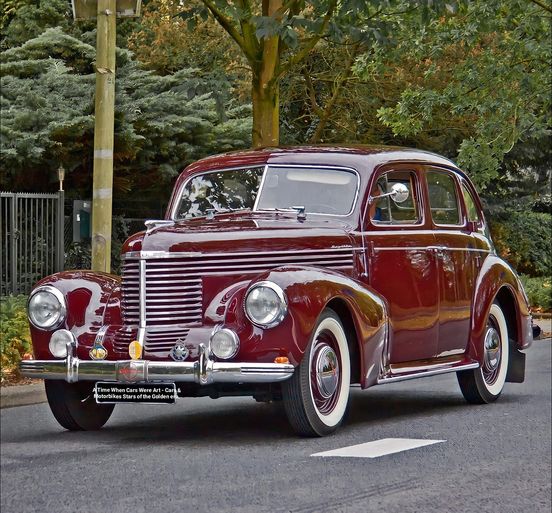The Opel Kapitän is a luxury car made in several different generations by the German car manufacturer Opel from 1938 until 1970 Manufacturer: Adam Opel AG, Rüsselsheim – Germany
Overview Production1948–1950 Powertrain Engine2.5 L I6 Transmission 3-speed
In October 1948, the Kapitän was reintroduced as Germany’s first post-war six-cylinder automobile. It would have made sense to start building the Kapitän a year earlier, as the engine was also used in the Opel Blitz trucks at the time, but the occupation regulations prohibited civilian sales of passenger cars of over 1.5 litres displacement. Initial production was reserved for the occupying powers, but sales to private customers started in 1949. There was no sign of the wide range of coupé and cabriolet bodies that had broadened the model’s appeal in the 1930s: the 1948 Kapitän was offered only as a saloon/sedan, based on the 1939 version.
The main differences from the pre-war model were round headlights as opposed to hexagonal ones, as well as improved leaf springs and dampers.From May 1950 the dashboard was redesigned and the shifter was relocated from the floor to the steering column. With 55 PS (40 kW; 54 hp), the first post-war Kapitän could reach a top speed of 126 km/h (78.3 mph), needed 29 seconds to reach 100 km/h (62 mph), and consumed 13 litres per 100 kilometres (22 mpg‑imp; 18 mpg‑US) in the process.
Up to February 1951, 30,431 Kapitäns were built

